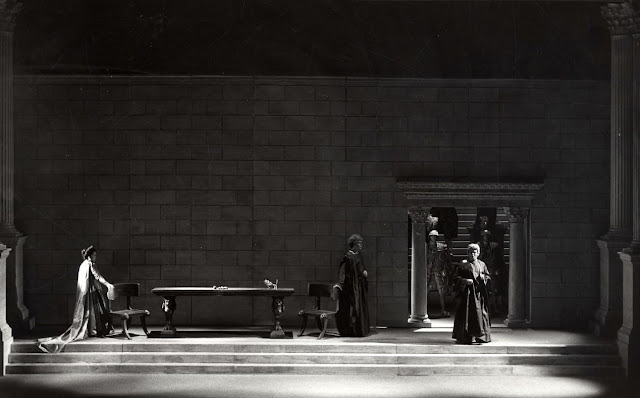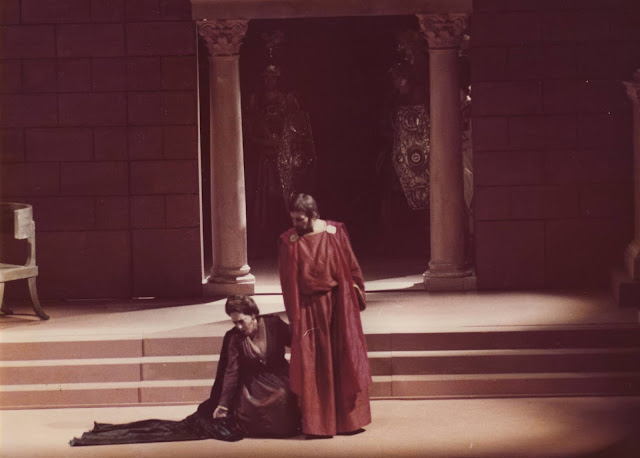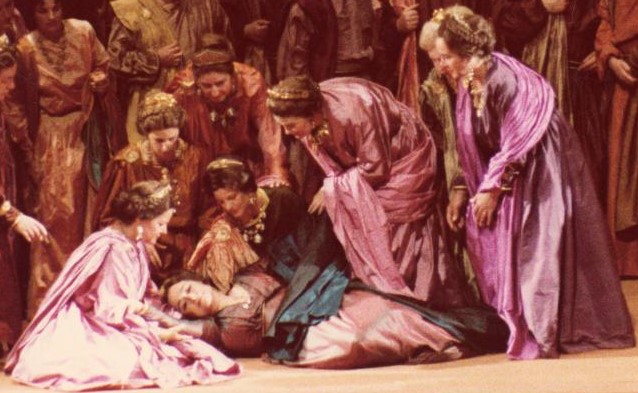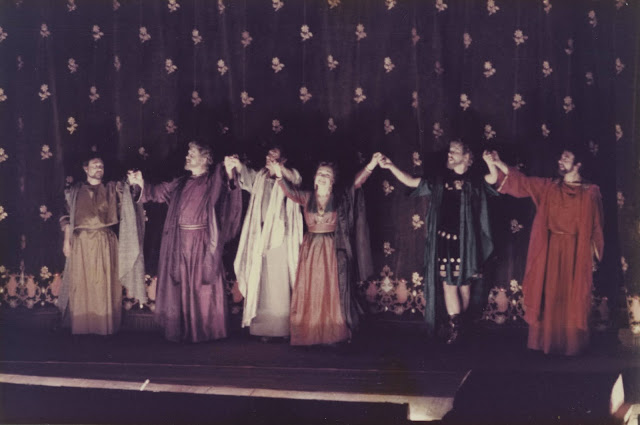LES MARTYRS

Premièr at Opéra de Paris – 10 April 1840
Sévere Roman Pronconcul RENATO BRUSON baritone
Félix Pauline’s father FERRUCCIO FURLANETTO bass
Callisthenes High Priest of Jupiter FRANCO SIGNOR bass
Néarque A Christian OSCAR DI CREDIO tenor
Le Grand Pretre GIOVANNI ANTONINI baritone
Un chretien MARIO GUGGIA tenor
Una donna, confidente de Pauline ANNA MARIA BAZZANI mezzo-soprano

COMPLETE RECORDING
FROM CD BOOKLET
Once again, the tenor assisted in the preparation of the libretto.
I could make as many billabilities as they want, I could change or lengthen what you wanted. ... I want to frighten M. Duponchel (the director of L’Opéra) about this as little as possible. I believe that the opera I would rather give at L’Opéra would be L’Assedio di Calais because it is the most studied, the most conforming to French taste, and as such everyone believes it was written for Paris.... I do not tell you that to obtain an engagement from M. Duponchel, who does not esteem me, I know. I have received offers a thousand times and two thousand times he has refused me, but I tell you this only for my self-respect that would enjoy it. 1 Would never talk of financial interest, thus you see my wish is noble, ... in any case, if Lucia is not given at the Italiens, I urge you to say a word to him from time to time.
On December 12, 1837 Lucia was produced at the Italiens, and its great success opened the doors of ‘Paris to Donizetti,
A success at the Théatre de l'Academie Royale de Musique (L’Opéra) is a glory that all composers seek, and it is with joy that I receive and accept the proposition that you have wanted to make me, to open the stage of this theatre, famous for so many great names, to two of my works.
Donizetti arrived in Paris on October 21, 1838 and shortly after wrote:
To tell you what I am doing is quickly said. I am staging at the Italiens Roberto Devereux and L'Elisir d'Amore. To tell you what I will do afterwards, here it is. I will give the opera that at Naples was forbidden, in the French language at the great French theatre, l'Académie Royale.
Roberto Devereux, featuring a new overture, a new tenor romanza and a new duet opened at the Italiens on December 27, 1838. L’Elisir d'Amore, with a new rondo and a new duet, opened on January 17, 1839. Meanwhile Donizetti had begun to think seriously about the revised version of Poliuto. The new libretto was to be provided by Eugéne Scribe, dean of the French librettists. In January 1839, Donizetti estimated that the work would be ready to go into rehearsal in October, he wrote to his teacher, Johann Simon Mayr in April:
I will give at the Grand Opera my Peoliuto, which was banished in Naples as being too sacred, It will be enlarged into four acts instead of the three as it was, and translated and adjusted for the French stage by Scribe, This means that I have had to rewrite all the recitatives anew, to make a new finale for the first act, to add arias, trios and appropriate dances such as they use here, in order that the public will not complain that the texture is Italian, and in this they would not be wrong. The music and the French stage have a cachet all their own, to which every composer must conform, whether it is in the recitatives on in the lyrical sections, for example, no crescendi etc. etc., no customary cadenzas, joy, joy, joy; then in between one verse of the cabaletta and the other you should always have some lines that heighten the emotion without using the customary repetitions of the lines which our poets employ. This Poliuto, now transformed into Les Martyrs, will be given within the year.
At the same time, Donizetti was working on both the second work for L!Opera, Le Duc d’Albe, again to a libretto by Scribe, and a major revision of Lucia for the Theatre de la Renaissance. Lucie de Lammermoor premiered on August 6, 1839. In addition, by early October Donizetti had "written, scored and delivered a little opera to the Opéra-Comique,''! and had agreed to provide the Théatre de la Renaissance with two works, La Fiancee du Tyrol, a reworking of Il Furioso, and L'Ange du Nisida, a new work. L'Ange was completed, but after the financial collapse of the theatre, it eventually metamorphosed into La Favorite (L'Opera, December 2, 1840). The little opera’ was La Fille du Régiment Which premiered on February 11, 1840. It is small wonder that Berlioz, in his review of La Fille du Regiment Wrote:
With two major scores for L’Opéra, Les Martyrs and Le Duc d'Albe, two others at the Renaissance, Lucie de Lammermoor and L'Ange de Nisida, two at the Opéra-Comique, La Fille du Regiment and another whose title is unknown, and still another for the Theatre-Italien, will have been written or transcribed by the same composer, M. Donizetti seems to treat us like a conquered country; it is a veritable invasion. One can no longer speak of the opera houses of Faris, but only of the opera houses of M. Donizetti.
Donizetti wrote Mayr in May 1839 that Les Martyrs was finished. However, in December 1839, Donizetti refers to writing a new aria for Duprez, who was to sing Polyeucte. Even three days before the premiere, Donizetti wrote, "If you could see the changes, the abridgements and lengthening’s! This morning I am still working on it.'' At long last, Les Martyrs was produced at L’Opéra on April 10, 1840 with the following cast:
Julie Dorus-Gras (Pauline)
Gilbert Louis Duprez (Folyeucte)
Eugene Etienne Massol (Séveére)
Prosper Derivis (Félix)
The Artists
Leyla Gencer was born on October 10, 1928 in Istanbul, Turkey. She studied with Elvira de Hidalgo and Giannina Arangi-Loombardi. She made her debut as Cio-Cio-San in Madama Butterfly at the Teatro San Carlo, Naples in 1954, She appeared in the world premieres of Foulenc's Pialogues des Carmelites and Pizetti's Assassino nella Cattedrale and has sung an extraordinarily large and varied number of roles taken from the dramatic soprano and coloratura soprano repertoire.

































































